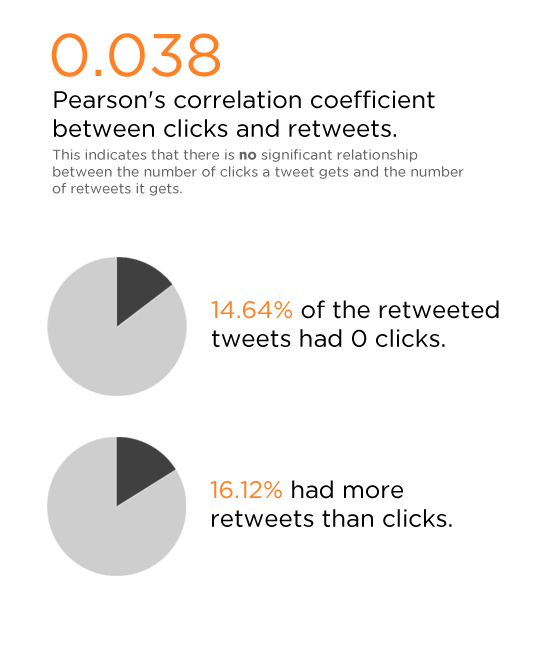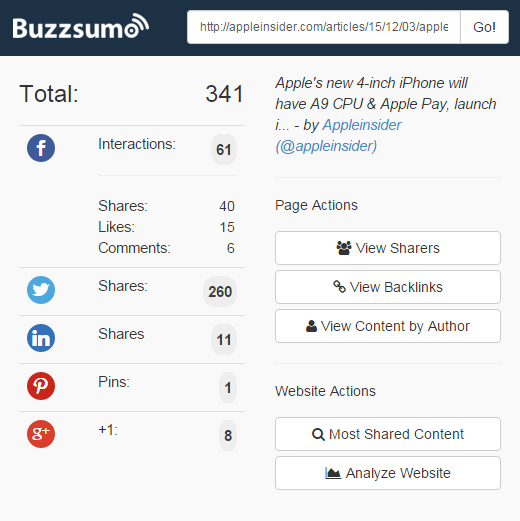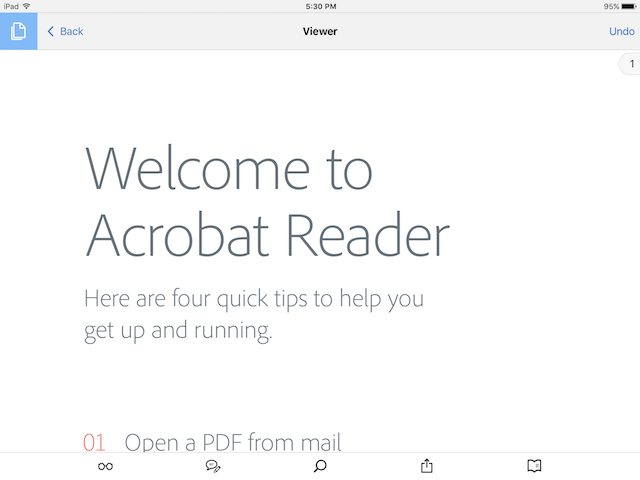

You may have noticed that Twitter recently made the surprising move of killing off its Twitter share count. In September, the social media network announced a significant redesign to its Twitter share buttons, sliding in the fact that share counts would no longer be made freely available. The news was not met well, and some companies have already started to provide alternatives for users still interested in viewing this kind of data for free.
In the post announcing the change, Twitter said:
The Tweet button has displayed share count over the last five years by querying a JSON endpoint hosted on various domains. These private JSON endpoints have been used by third-party developers over the years to retrieve a simple share count of any URL. These endpoints will be shut down next month when the Tweet button removes its share count feature. The Twitter REST API’s search endpoints are the best way to gather ad-hoc information about a URL shared on Twitter.
About two weeks later, Twitter posted more about the change in a blog post, revealing a little bit more about its reasoning behind the decision. Twitter said the count did not taken into account replies, quotes, and different variants of your URL. It also said in the final steps required to upgrade its technology, the company was faced with a trade off, and the Twitter share count didn’t cut it.
What Twitter didn’t say in either of these posts is that if you want this information directly from Twitter, you’ll have to pay to use their subsidiary, Gnip. A quick search on Gnip’s site, however, reveals absolutely no information about how much it will actually cost. According to MarketingLand, the number could be anywhere between $300 and $50,000 a month, depending on how much data your site generates.
The response has been largely negative, with a lot of publishers and social media managers not happy about the change. Twitter has also been criticized for the way it has handled the situation, and its lack of transparency in announcing the change. Some have speculated that the real reasoning behind the decision is tied directly to Twitter’s profitability.
In response to the backlash, Twitter updated its original blogpost on November 22, saying:
We appreciate your feedback over the past 60 days on how you have used these counts, and look forward to incorporating it as we create and improve tools to integrate Twitter content into your apps and websites.
The hashtag #SaveOurShareCounts continues to be the scene of much criticism for the social media giant, and there’s even a petition calling on Twitter to reverse its decision.
Hey @Twitter — Web publishers are a huge part of your success. Don't dump us. #SaveOurShareCounts
— Doug Kessler (@dougkessler) November 28, 2015
Boo to @twitter for dropping share counts – now the only social site that DOESN'T have a counter on the blog site I use #SaveOurShareCounts
— Evan Sinar (@EvanSinar) November 30, 2015
"Share" was a statement about a specific Tweet for me, not necessarily about any link included #SaveOurShareCounts https://t.co/mBhv3t8y0d
— LIQUID NEWSROOM (@LiquidNewsroom) November 30, 2015
This blog post has been shared on @twitter more than 2,000 times. But you wouldn't know that. #SaveOurShareCounts pic.twitter.com/LH3W79BEab
— John Meese (@JohnRMeese) November 30, 2015
For sites that still display the share counts from various social media networks, there’s now a big fat zero, or empty space, next to every Twitter logo. And at the time of writing, this was obviously affecting major sites like Slate, The Huffington Post, and Entertainment Weekly.
 When it comes to tracking and analyzing social media growth, the number of times an article is shared is considered a key piece of information. For publishers, in addition to social media referrals and pageviews, it’s a key factor in understanding how well content does At a glance, Twitter counts are one of several metrics used to determine if your content has gone viral.
When it comes to tracking and analyzing social media growth, the number of times an article is shared is considered a key piece of information. For publishers, in addition to social media referrals and pageviews, it’s a key factor in understanding how well content does At a glance, Twitter counts are one of several metrics used to determine if your content has gone viral.
This is all part of something called social proof. If users see that an article has been shared extensively on Twitter, they might be more likely to read it, and share it. This applies just as much to publishers as it does to brands. Like it or not, Twitter share counts are a part of crowd psychology — they are social media’s version of customer referrals.
There are two ways you can look at this. You can either take this in stride and rethink your approach to social media metrics, or you look for a workaround. In fact, some people might argue that social media shares are a meaningless statistic, and that Twitter has actually done you a favor.
Referrals are probably the most important figure when it comes to gauging the social media success of your online content. A 2012 study revealed that just because a person shared your content on Twitter doesn’t mean they read it. Marketing company Hubspot found, in analyzing 2.7 million tweets with links, that just over 14 percent of retweeted tweets had 0 clicks, and around 16 percent had more retweets than clicks.
 Two years later, Tony Haile, the CEO of analytics company Chartbeat, echoed the same sentiment, saying they were unable to find any “correlation between social shares and people actually reading.” Chartbeat’s lead data scientist Josh Schwartz later told The Verge that this statement was specifically about Twitter.
Two years later, Tony Haile, the CEO of analytics company Chartbeat, echoed the same sentiment, saying they were unable to find any “correlation between social shares and people actually reading.” Chartbeat’s lead data scientist Josh Schwartz later told The Verge that this statement was specifically about Twitter.
To truly measure reader engagement you need a combination of social media referrals, pageviews, unique pageviews, and time spent on the page. The social media count alone, if high, can be an impressive statistic but it is only a small part of a much bigger picture.
You can measure your how much of your traffic is coming from social media using free services like Google Analytics, while Bitly or Buffer can also tell you exactly how many times links you share in your own tweets are clicked on.
If you’re still interested in finding out that elusive number, there are a few services that provide a free workaround.
1. BuzzSumo is a handy social media Chrome browser extension which lets you know how many times a page has been shared on Twitter, as well as on Facebook, LinkedIn, Pinterest, and Google+.
When it comes to seeing how many times a page has been shared on Twitter using BuzzSumo, there are a few caveats and shortcomings to keep in mind. For Twitter specifically, BuzzSumo indexes each URL and fetches the count from its own database. In order to see this information, you have to sign up for a free BuzzSumo account
In some cases, you’ll get a message asking you to wait a while:

In our experience, the extension didn’t always work, and that message often persisted for days.
When it actually does work, BuzzSumo provides the Twitter count, and also provides handy links to the site’s most shared content. Paid accounts (which start at $99 a month) have access to additional information including who shared the content, backlinks to that page, and viewing other content by that author. They can also view a more in-depth content analysis of any given website.

So are BuzzSumo’s tweet counts accurate? They go into detail about that in a blog post explaining exactly how it works. BuzzSumo is using Gnip, so much of the stats are coming straight from the horse’s mouth. In addition, without elaborating, they say they run additional filters on the data, combine it with data from other sources, and then share that information through the extension.
Since there is a cost involved for the company, BuzzSumo says it is limiting how often the figures are updated, with regular updates taking place only for the first three days after content is published. According to BuzzSumo, this is when most Twitter shares take place anyway. How often they update after that three day period will depend on the popularity of the article, but they give no indication of what that threshold is.
2. IFTTT: Another way you can find out the count is to use the IFTTT recipe like this one which adds any instance of a Twitter search to a Google Drive spreadsheet.
This of course will only work with smaller websites that don’t publish a lot of content, since you have to repeat this recipe with every single article. What’s good about it though, is that it lets you keep track of who is actually sharing your content, allowing you to respond to or retweet them.
To create the recipe, start with a Twitter search and place the URL of the article without the “http://www.” Another caveat to consider here is that it will not be the complete count due to the shortcomings that Twitter pointed out in its blog post.
If you’re not already familiar with IFTTT, it’s a great free service that allows you to automate various tasks around the web. To find out more about the service, check out our in-depth IFTTT guide.
OpenShareCount: With just a little bit of code, OpenShareCount allows you to advertise that number on your site once again. You can sign up for a free account using your Twitter account, and link it to just one domain.
Once you’ve signed up, you have the choice of a large or small button. Once you’ve made your choice, copy and paste that code into your website’s code, right after the code for your current Twitter button.
As they point out on the website, OpenShareCount is in beta, so you’re using it at your own risk. It is also free for now, but that may change. And, as with the other options, there are some shortcomings:
Due to limitations on the Search API initially only tweets from the past week or so will be counted. Tweets going forward will be counted and added to the total. Tweets from private accounts will not be counted.
What do you think? Do Twitter share counts matter? Have you found any other workarounds? Let us know in the comments.




 WildStar Is Bringing Individuality Back to the MMO
WildStar Is Bringing Individuality Back to the MMO Monster Hunter 4 Ultimate (3DS) - MH4U tips, strategy guide
Monster Hunter 4 Ultimate (3DS) - MH4U tips, strategy guide Kingdom Hearts 3 Release Date, News, Rumors and Trailer Analysis
Kingdom Hearts 3 Release Date, News, Rumors and Trailer Analysis Room Escape SIX Walkthrough
Room Escape SIX Walkthrough The Best Apps To Sign, Annotate & Edit PDFs On Your iPad
The Best Apps To Sign, Annotate & Edit PDFs On Your iPad